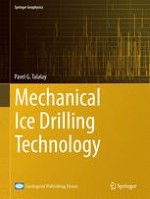2016 | Buch
Über dieses Buch
This book provides a review of mechanical ice drilling technology, including the design, parameters, and performance of various tools and drills for making holes in snow, firn and ice. The material presents the historical development of ice drilling tools and devices from the first experience taken place more than 170 years ago to the present day and focuses on the modern vision of ice drilling technology. It is illustrated with numerous pictures, many of them published for the first time. This book is intended for specialists in ice core sciences, drilling engineers, glaciologists, and can be useful for high-school students and other readers who are very interested in engineering and cold regions technology.
Anzeige
